Panama City is the capital of Panama, located on the Pacific Ocean coast. It has a population of 2 million residents, which is almost half of the entire country’s population.
What to see in the capital of Panama? I’ll start by saying that anyone who hasn’t seen the capital of Panama will be surprised by its diversity. This may sound mundane, but in Panama City, a real jungle literally meets the concrete forest of skyscrapers. Right next to the skyscrapers, we can admire the historic Casco Viejo, or Old Town, which is on the UNESCO World Heritage list.
There are plenty of attractions, and this city is diverse in many other ways. It is a place where different cultures collide. During my travels, I had the opportunity to meet both “ordinary” Panamanians, immigrants from around the world, and the indigenous people of Panama.
I invite you to explore Panama City – I hope you will like this city as much as I do. 🙂
Table of Contents
- 1 Casco Viejo
- 2 Panama Canal
- 3 Museums in Panama City
- 4 Panama Rainforest Discovery Center
- 5 Amador Causeway
- 6 Poin Panama
- 7 What else to see in Panama City?
- 8 Visiting the Embera Tribe
- 9 Where to eat in Panama City?
- 10 Where to stay in Panama City?
- 11 Transportation in Panama City
- 12 How much time to spend in Panama City?
Casco Viejo
Exploring Panama City is worth starting from the Old Town, inscribed on the UNESCO World Heritage list, known as Casco Viejo (also known as Casco Antiguo and San Felipe). Its narrow streets are filled primarily with colorful buildings, like from a postcard. Adding to this are vibrant squares where you can watch local artists and craftsmen at work, the most distinctive of whom are the Kuna Indians, dressed in colorful traditional costumes, giving us a unique opportunity to admire the extraordinary atmosphere of Panama City.
Casco Antiguo was founded in 1673, and the layout of the city resembles a grid, surrounded by thick walls to defend against pirates. The current layout comes from the late 19th and early 20th centuries, combining colonial style with neoclassical and art deco. The Old Town has four main squares: Plaza de la Independencia, Plaza Bolívar, Plaza Herrera, and Plaza de Francia, commemorating the French pioneers of the Panama Canal. There are also preserved religious monuments, such as the San José Church with its golden altar and the La Merced Church. It’s also worth noting the ruins of the Jesuit monastery and the Santo Domingo monastery, as their ruins add character to Casco Viejo while attesting to the rich and often difficult history of the city.
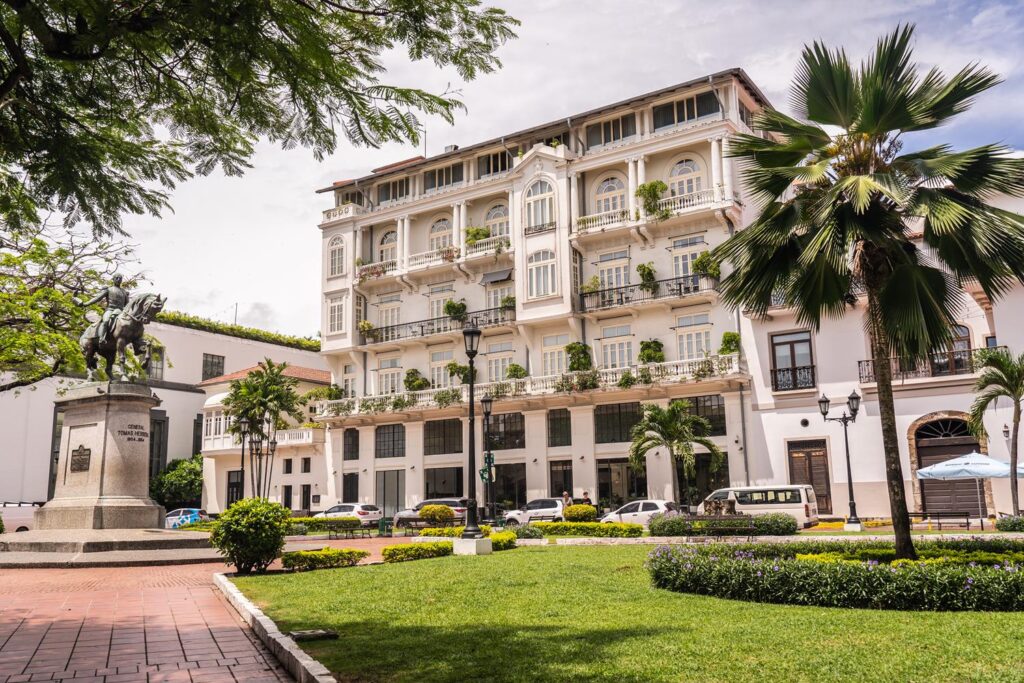
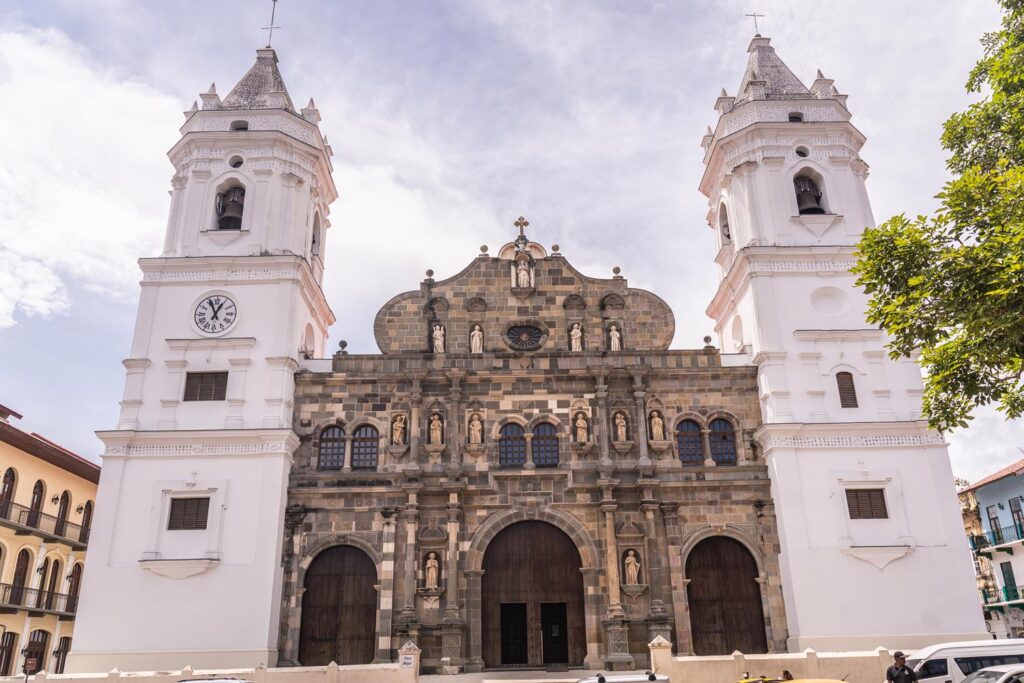
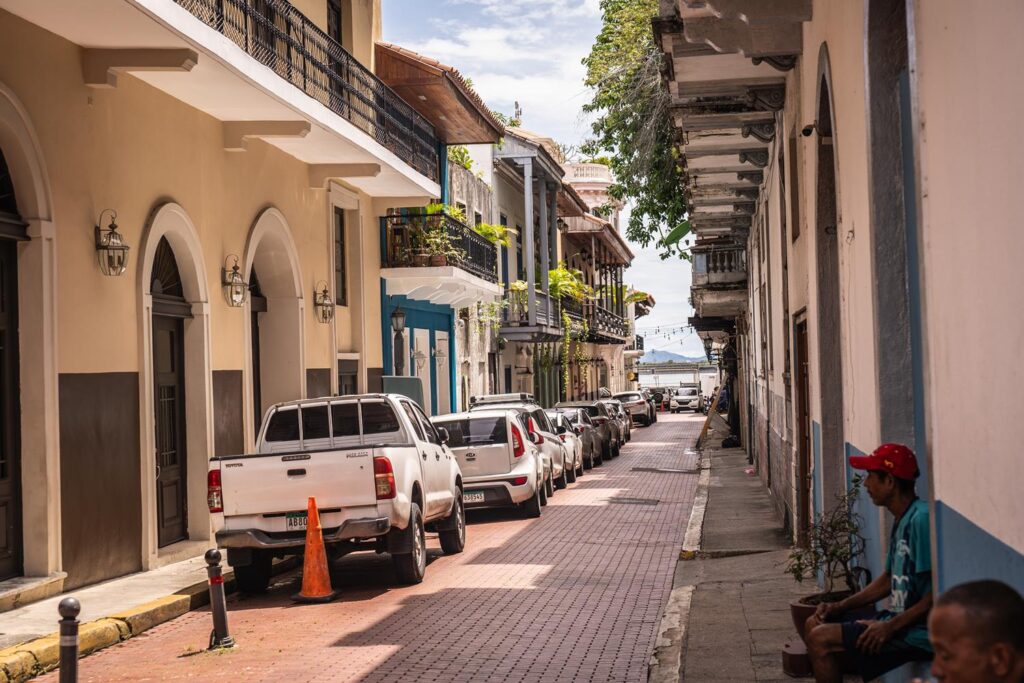
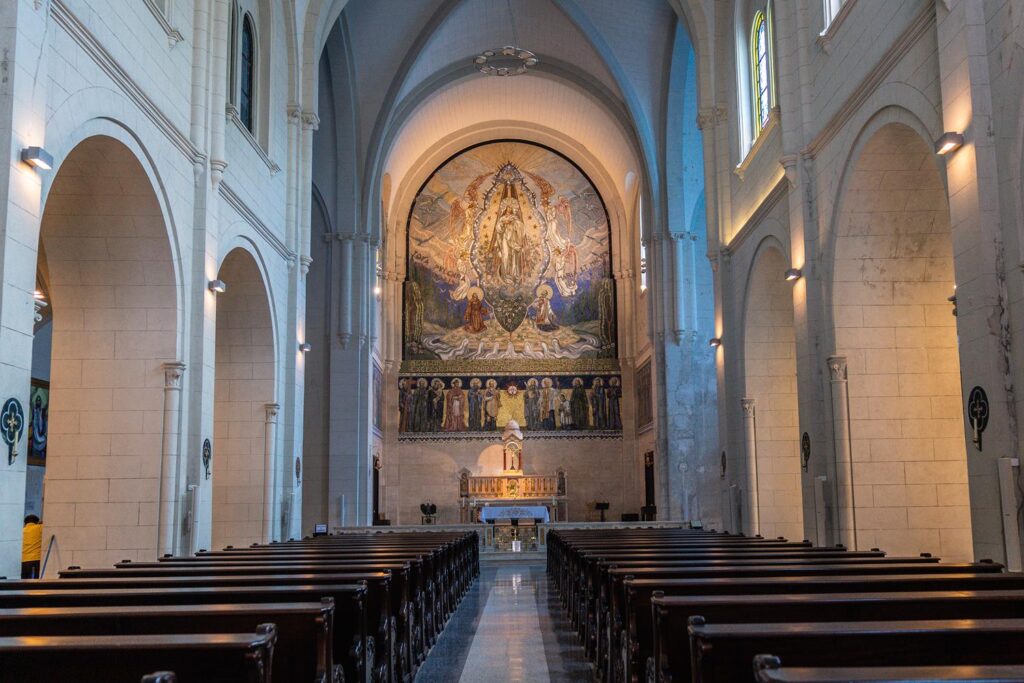
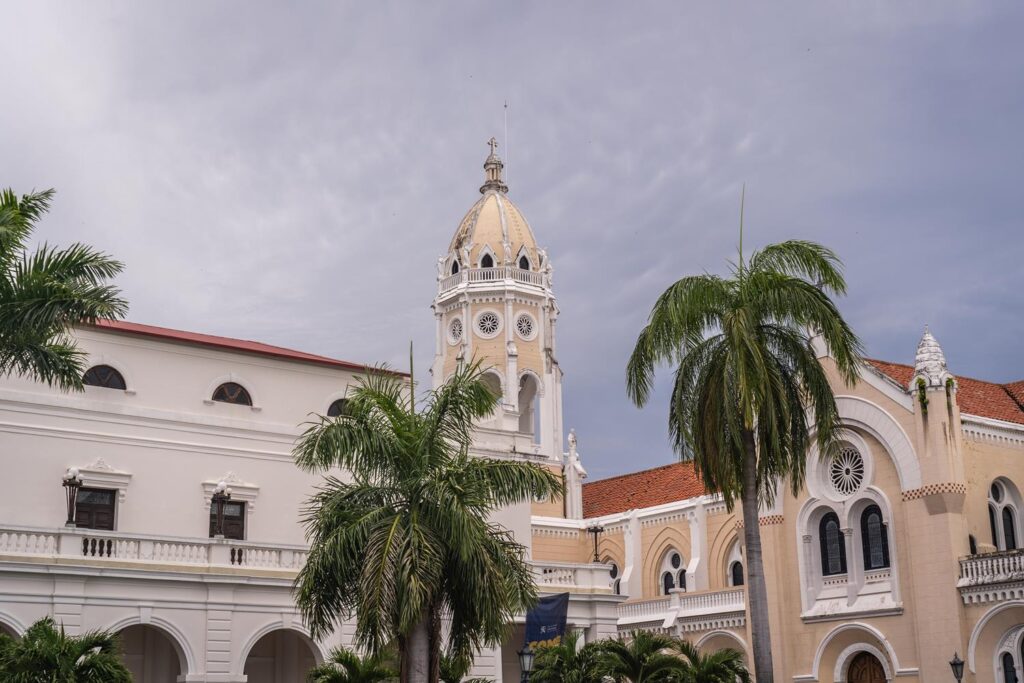
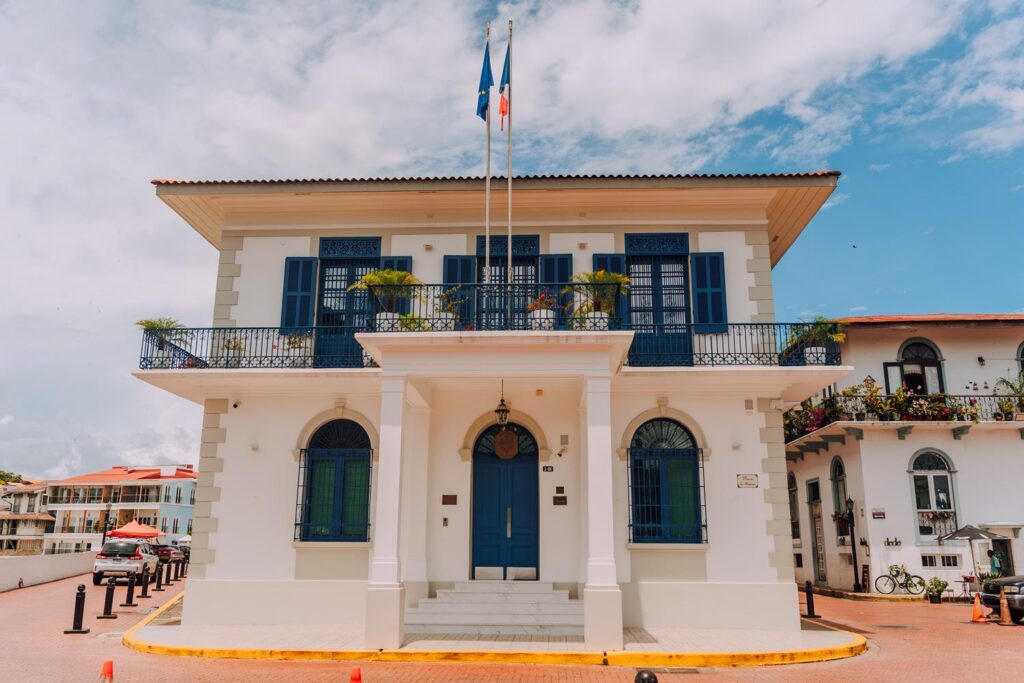
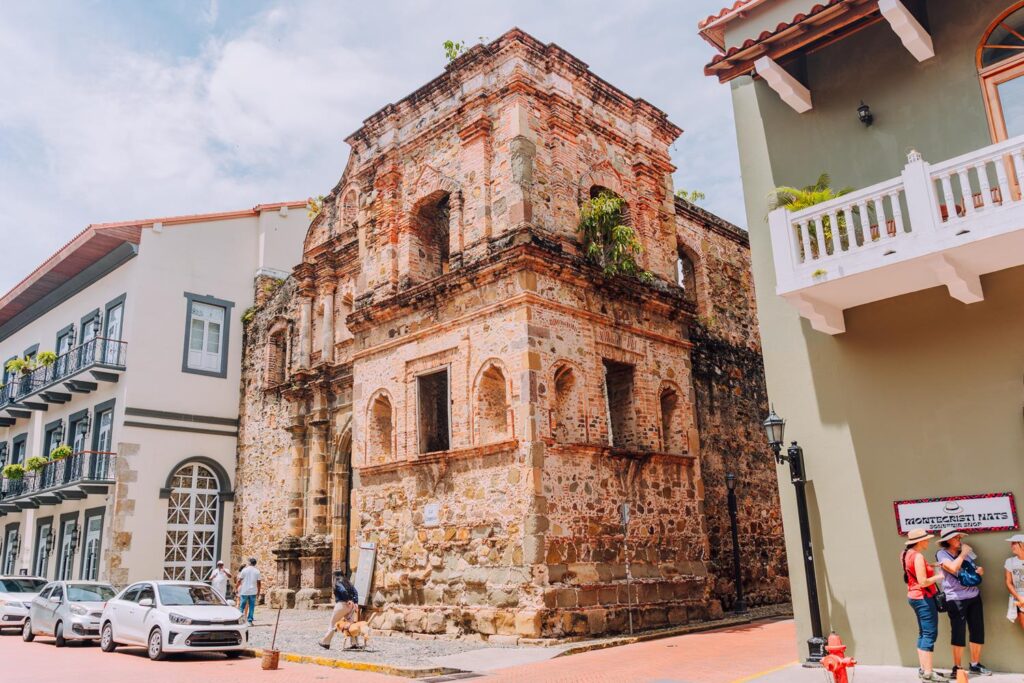
Panama Canal
The city is primarily associated with the Panama Canal. It’s no wonder, as the Panama Canal is one of the greatest engineering achievements of the 20th century. An achievement that forever changed global shipping routes. This artificial canal, over 80 kilometers long, connects the Atlantic Ocean with the Pacific.
In May 1879, Ferdinand de Lesseps, the creator of the Suez Canal, presented the project for a canal connecting the Atlantic with the Pacific through Panama, which was accepted. A company was formed, and just two years later, work began, but numerous difficulties were encountered, including uneven terrain and epidemics (of malaria and yellow fever). Despite changes to the project, including the addition of locks, costs rose, and a corruption scandal surrounding the company’s financing in 1888 led to the halting of construction and the collapse of the “French Canal.”
At that point, the construction of the Panama Canal was taken over by engineer Philippe-Jean Bunau-Varilla, who continued work according to Gustave Eiffel’s design. Struggling with a lack of funds, Bunau-Varilla turned to the US government, offering them rights to exploit the canal and control over the adjacent area. This move allowed Americans to complete the construction.
This is really just the beginning, presented in a very brief overview when it comes to the Panama Canal. The history is incredibly fascinating, and to delve deeper into it, it’s worth visiting the Panama Canal Museum and the Miraflores Visitor Center.
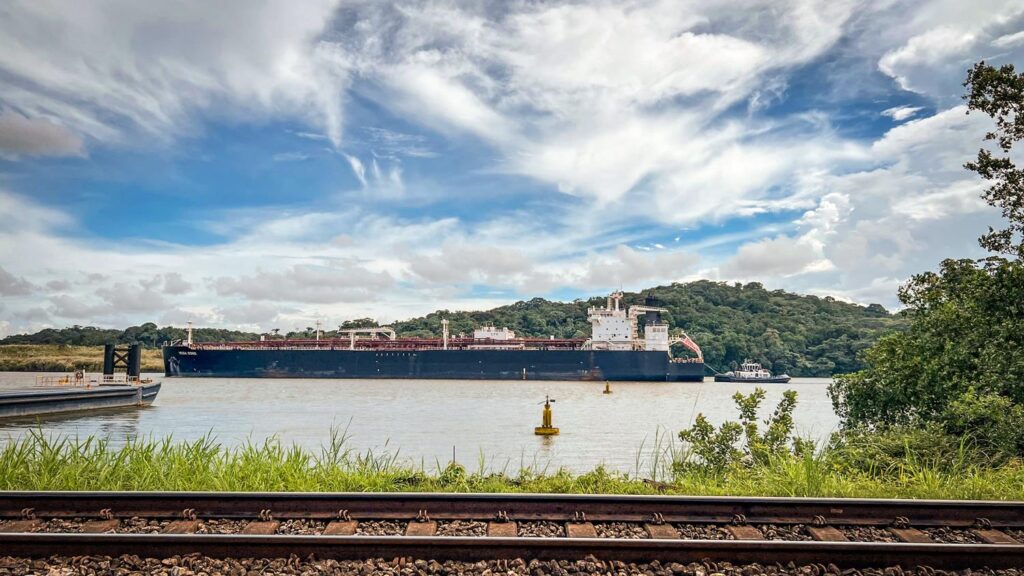
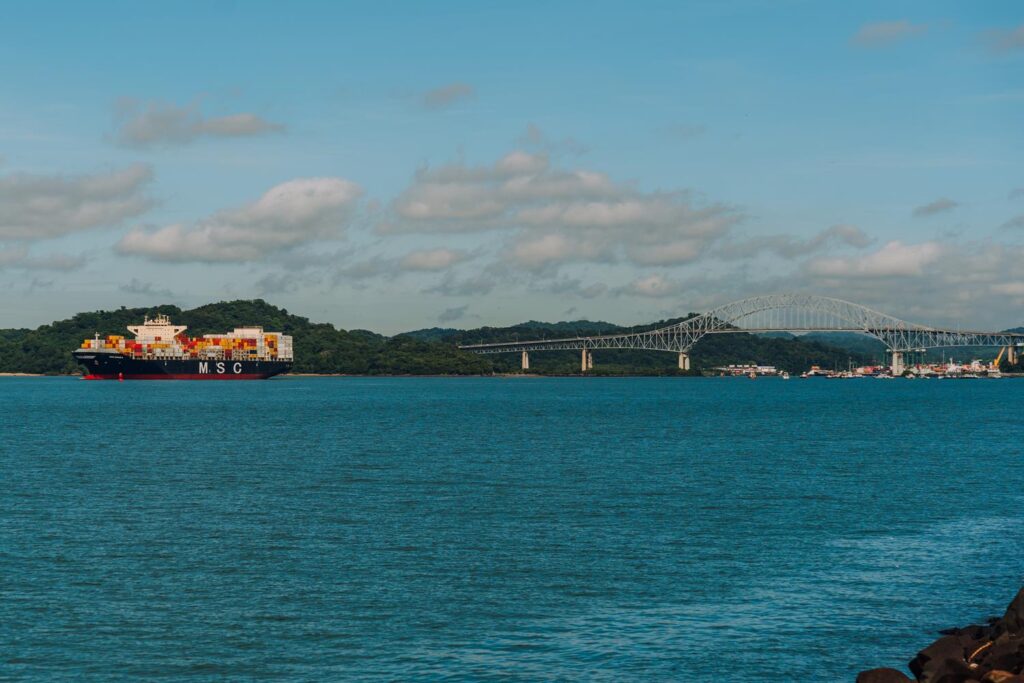
Museums in Panama City
Panama City has many museums, so if you enjoy exploring, you definitely won’t be bored here. I’ll list some of them below; surely everyone will find something for themselves: nature, history, amazing constructions, gold… In my opinion, you need to explore for at least a few days to see at least half of them, and it’s worth noting that museums are closed on Mondays.
- Museo del Canal Interoceánico de Panamá – The Panama Canal Museum offers insight into the history of the canal’s construction and its significance for global trade.
- Museo de la Historia de Panamá – The Museum dedicated to the history of Panama, from pre-Columbian times to the present, with a rich collection of exhibits.
- Museo del Oro – The Gold Museum, which houses an impressive collection of pre-Columbian gold artifacts.
- Museo de Ciencias Naturales – The Natural Science Museum, which presents the diversity of Panama’s flora and fauna and issues related to ecology.
- Museo de la Biodiversidad – The Museum dedicated to the biodiversity of the region.
- Museo de la Ciudad – The City Museum, which documents the development of Panama City and its culture over the years.
- Museo de la Revolución – A museum showcasing the history of the Panamanian revolution and the struggle for independence.
Panama Rainforest Discovery Center
This place is a true paradise for those wanting to get closer to nature and feel the unique climate of the rainforest. Nature in Panama is definitely the most impressive. You can feel like you’re in a nature documentary – I’m not exaggerating!
The Rainforest Discovery Center is located outside Panama City and has several main points of interest. First, there is a designated educational trail through the forest, 1.1 km long. Along the way, there are two resting spots, one of which is by the shore of Lake Calamito, where you can spot waterfowl often hidden in the bushes. The paths are really well-prepared, and the hike is pleasant.
The second spot is the Hummingbird Sanctuary. Here, you can almost be certain that hummingbirds will appear. There are 15 species present, although not all are available year-round. The next point is an observation tower, 32 meters high, allowing you to admire the rainforest from every level. Initially, I didn’t want to go up there at all; that was my plan, but luckily I managed to climb up thanks to a friend. I panicked, cried, and then laughed about it, and honestly, it was worth it! Besides admiring the layers of the forest, bats were flying in the background, monkeys were running around, and we could observe all of it from the perfect distance.
You really need to keep your eyes peeled in this place, as spotting animals on your own is much more difficult, especially if you’re not familiar with the local conditions. Therefore, it’s worth going with a group or on an organized tour.

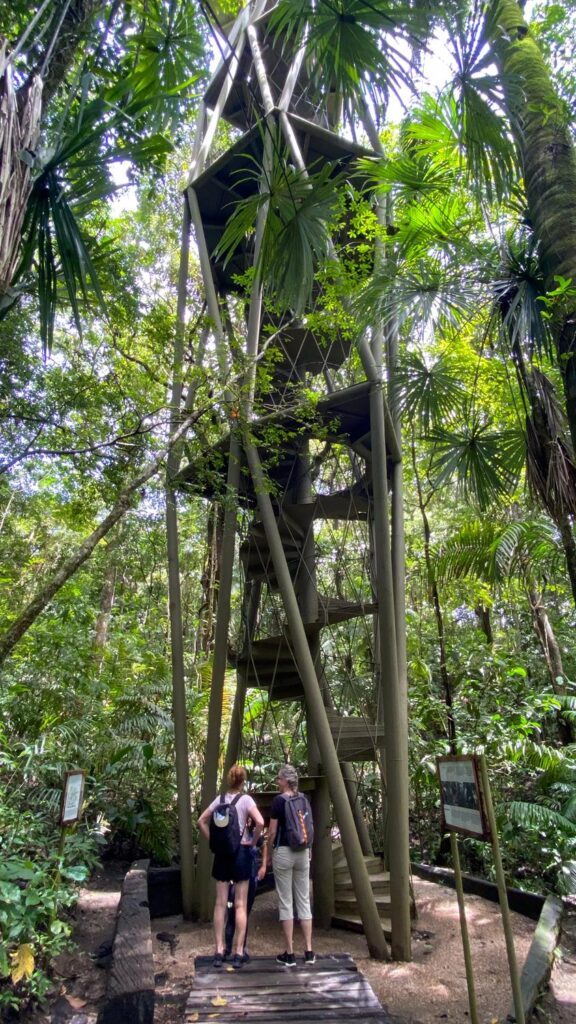
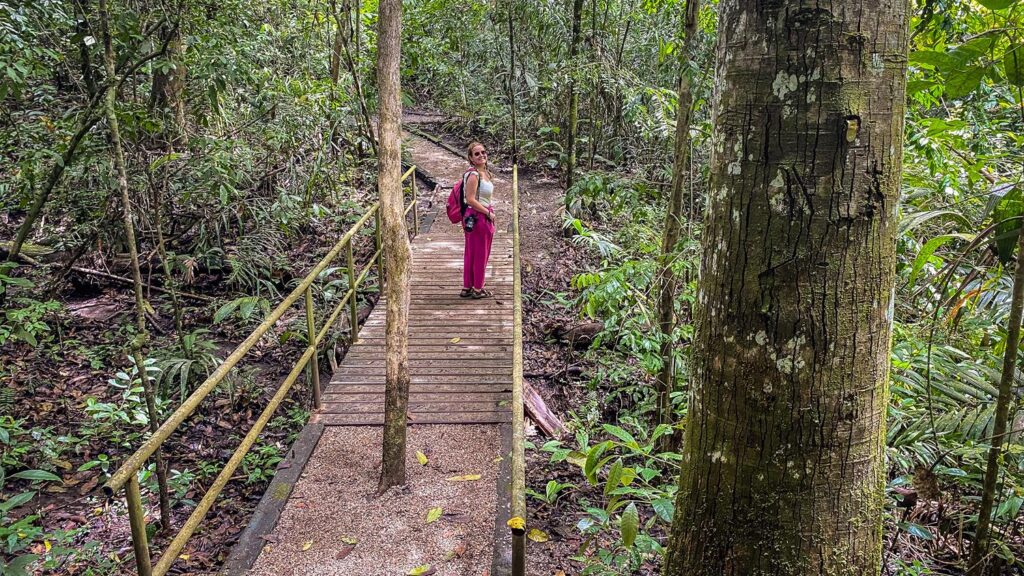
Amador Causeway
Today, the causeway is one of the most visited places in Panama, ideal for walking and relaxing. It offers a beautiful view of the city skyline and the ships waiting their turn to pass through the canal.
The Amador Causeway connects the city with four islands: Naos, Perico, Culebra, and Flamenco. It was built in 1913 from stones excavated during the most challenging section of the Panama Canal construction.
This place was once part of the American military complex, Fort Amador, which was established to defend the Panama Canal. Today, remnants of the old military installations can still be seen on the islands, although their role is now completely different.
Here, you can find many bars, restaurants, and cafes serving local and international dishes. The island is home to the Smithsonian Tropical Research Institute, where you can see interesting exhibits. It’s worth taking your time here; you can also rent a bike and explore the area!

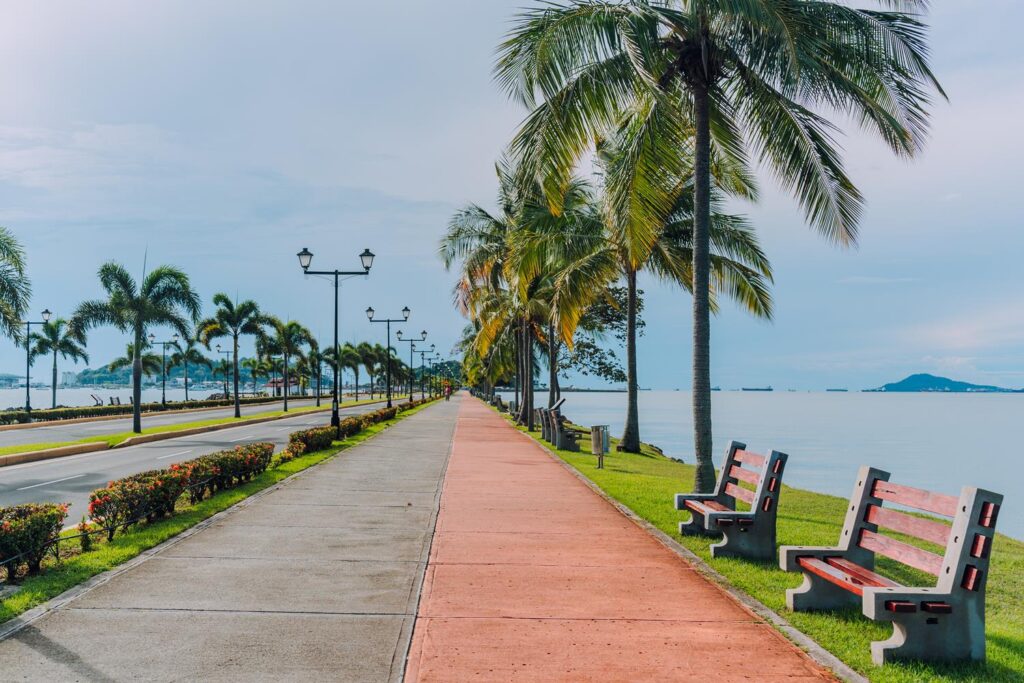
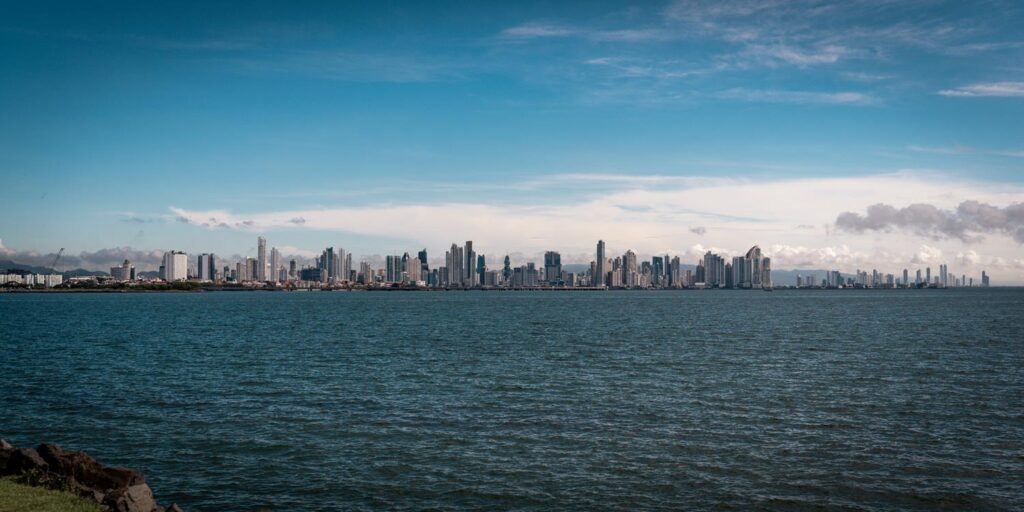
Poin Panama
If you’re looking for excitement in Panama City, Poin Panama is the perfect place. From a height of 152 meters, you can enjoy incredible views of the city. Additionally, you can stand on a glass observation point and watch cars passing beneath your feet.
I personally visited two of the viewpoints and the VR museum. But that’s not all, as the biggest thrill comes from the zip line. There’s also a swing at the top of the building.
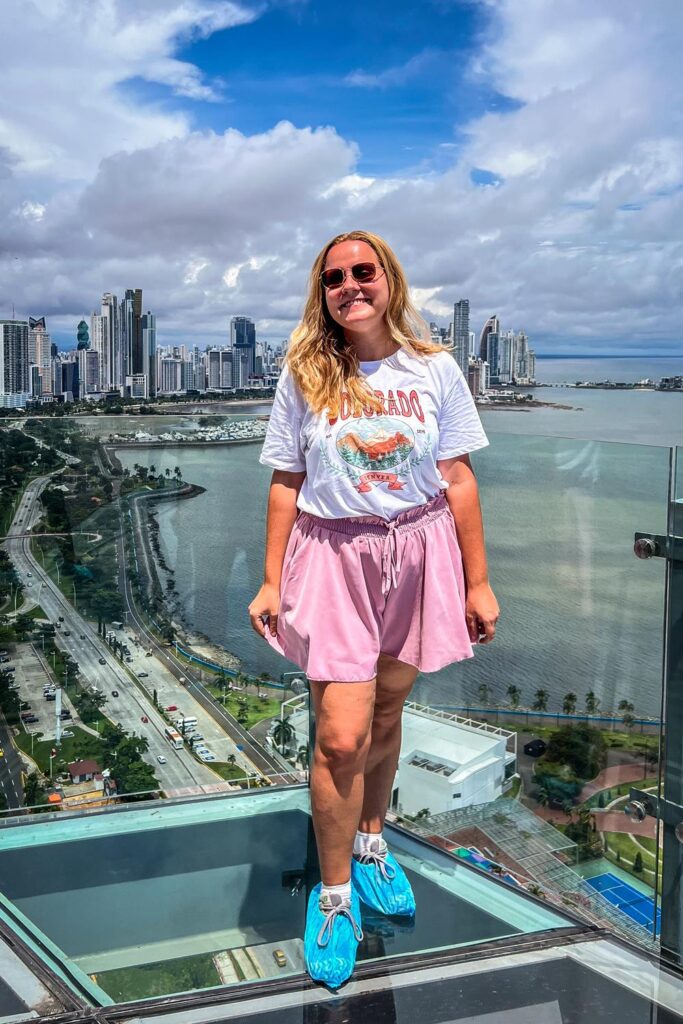
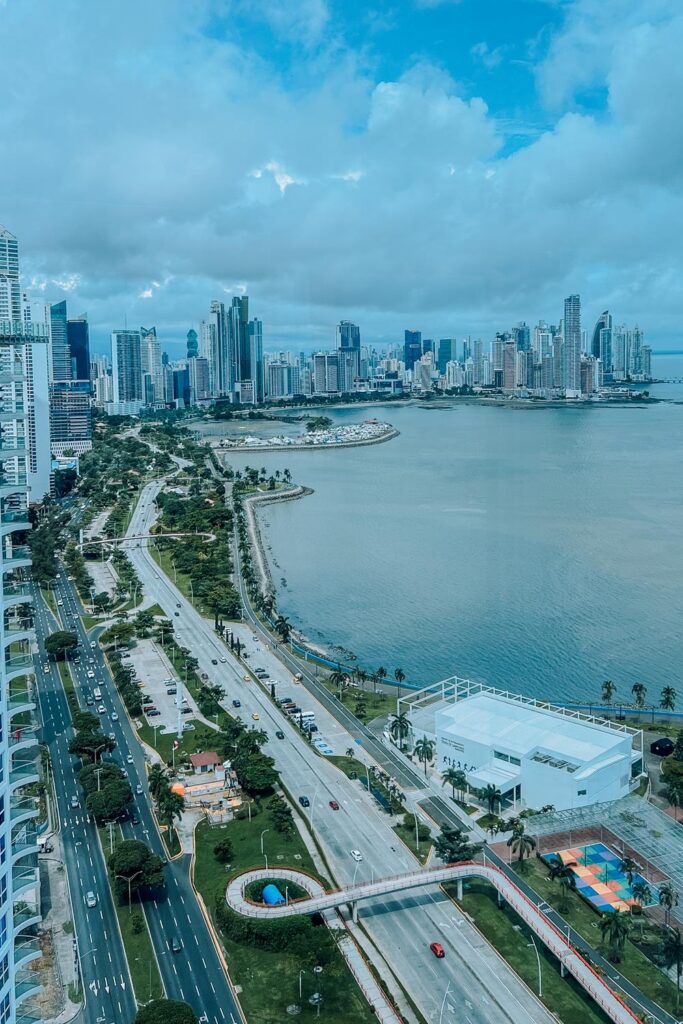
What else to see in Panama City?
Of course, these are not all the attractions in Panama City. It’s challenging to see everything, let alone fit it all into one entry, as there is incredible nature, history, and architecture here. One place worth visiting is the Metropolitan National Park—a rainforest within the city. I didn’t have time to hike to the top, although I’ve heard that the views are truly magnificent. If you’re in Panama, remember this place.
What to do around Panama? The first answer to that question would be to travel to paradise islands, especially Monkey Island. This is the most popular choice, and you probably already have such trips planned. So I have something completely different to recommend.
Visiting the Embera Tribe
Located just 35 km from Panama City, the village of Parará Purú is one of the places that particularly stood out to me. Although the distance doesn’t seem large, getting there is not so easy—you need transport to the riverbank, and from that point, you’ll need a boat and a local guide, as there is no other way to get there. The village lies along the Chagres River, which Columbus named the “river of crocodiles” for good reason. Fortunately, we didn’t encounter any crocodiles, but we had the chance to see other animals, such as sloths, colorful birds, and butterflies.
During my visit to Parará Purú, I was particularly fascinated by the rituals and traditions of the Embera tribe. I witnessed their traditional dances and learned about the custom of body painting with jagua dye, which protects against the sun and insects. Interestingly, they even paint newborns to prevent body hair from growing in the future. Our visit concluded with a local meal—tilapia served with plantains—and the opportunity to wear traditional Embera clothing. The colors of their garments and the handmade ornaments are simply amazing.
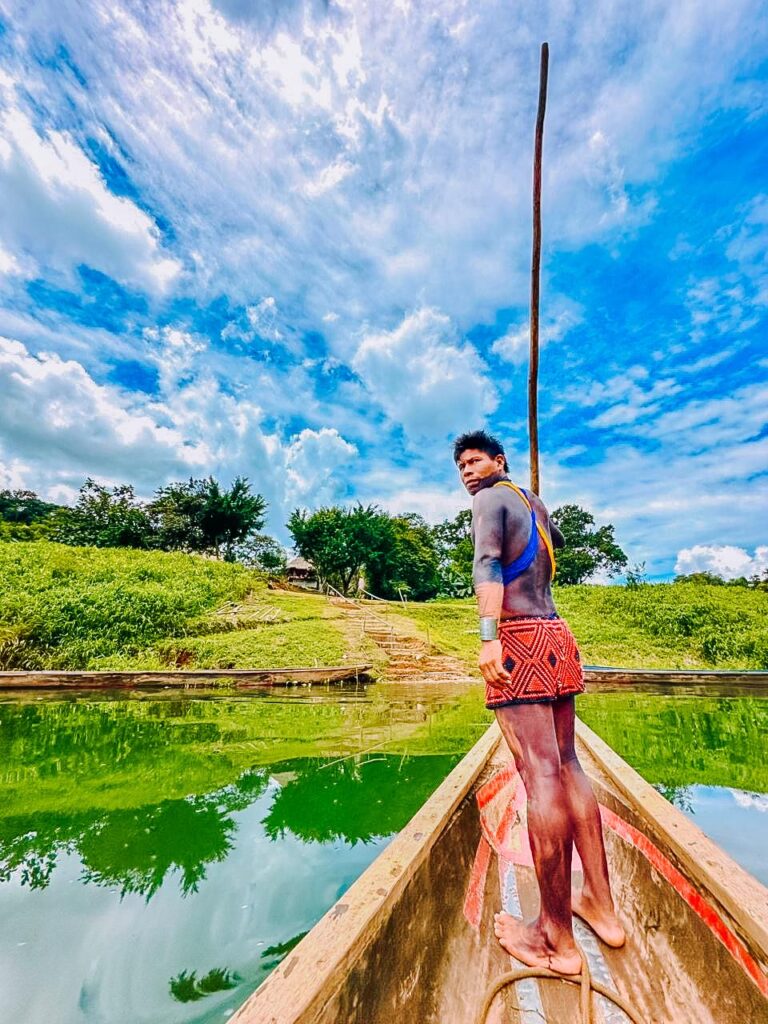
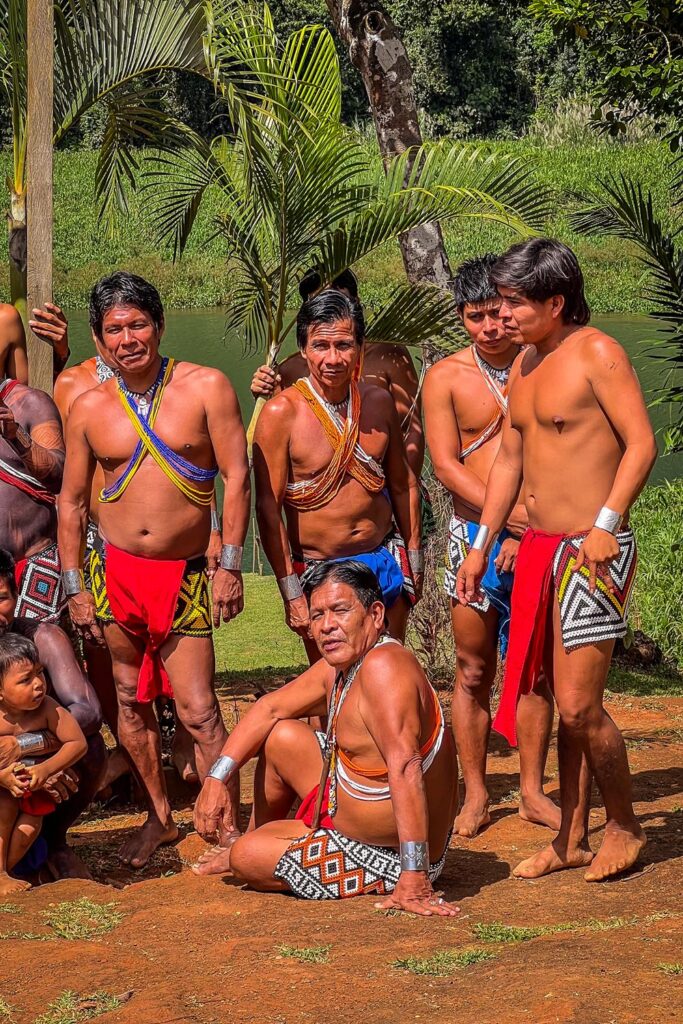
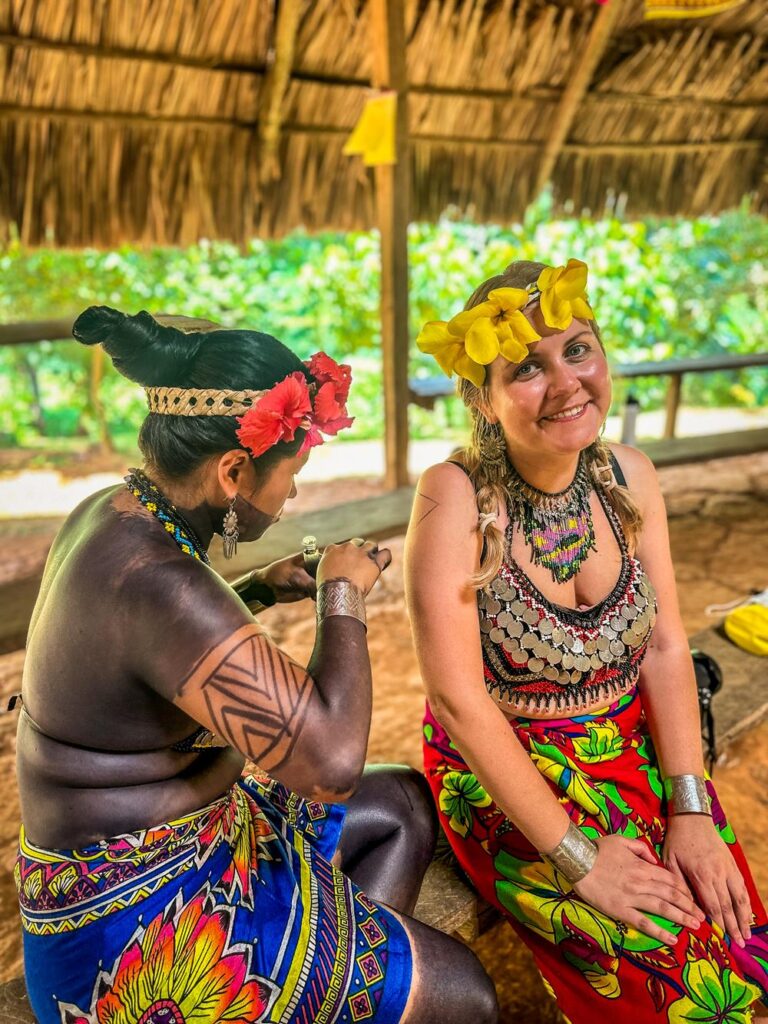
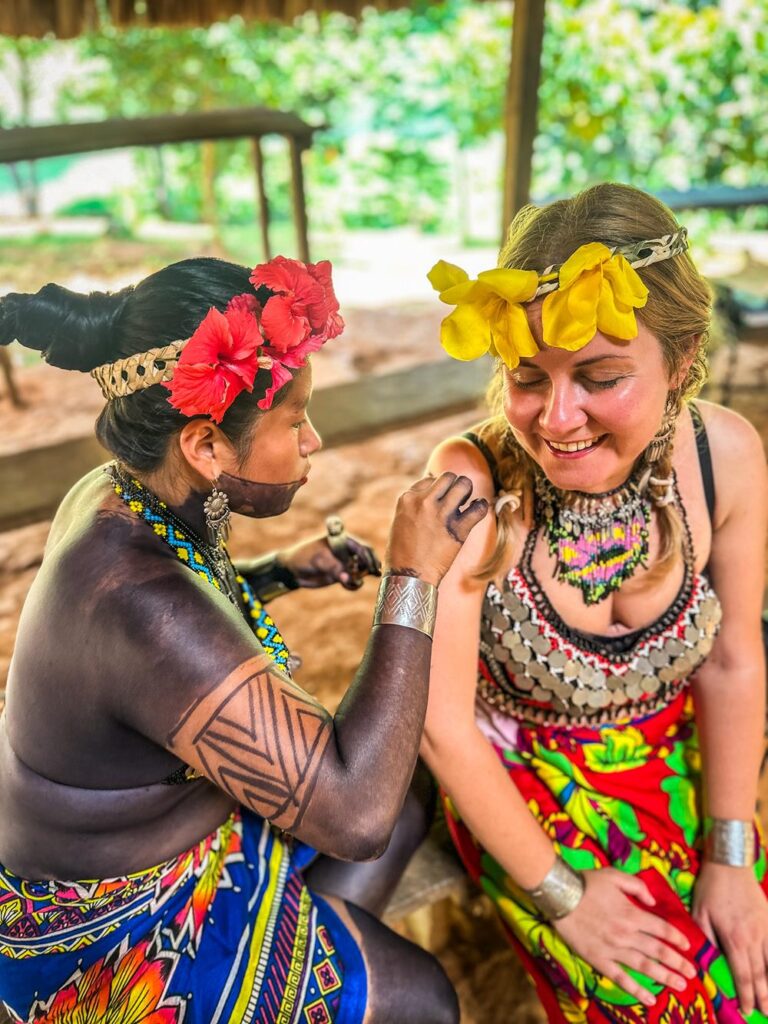
Where to eat in Panama City?
In the capital, I visited several places worth checking out in Panama City when it comes to food. All were recommended by my Panamanian friends, so there was no chance anything would be wrong.
Bocao507 – This is a true gem for seafood lovers. They serve fresh and delicious dishes that will surely satisfy even the most discerning palates. We ordered a selection of several dishes, and everything was delicious, but the best was Guacho de Mariscos, which is a Panamanian seafood stew. It was probably the best dish I had during my two weeks in Panama.
Tantalo – A lovely place for dinner, followed by relaxation with a drink. The restaurant has a rooftop bar where you can enjoy wonderful views of the city. I recommend the ceviche, mini burgers, and…
Diabolicos – A great option for lunch with Panamanian cuisine. A bonus for the decor, as the place is interestingly adorned with traditional Panamanian masks.
Poin Panama – This spot has several bars and eateries; it’s a good place for ceviche and beer with a view of the city. A more touristy spot, worth visiting while at Poin Panama.
Where to stay in Panama City?
If you’re looking for a place to stay in Panama City, it’s worth considering various options. Here are some hotels I’ve checked in Panama City:
Westin Playa Bonita – I recommend it for its beautiful view and beach, an ideal place to relax away from the hustle and bustle. However, this hotel is located about 20 minutes outside the city, and during peak hours, the commute can take significantly longer.
Crowne Plaza Panama Airport, IHG Hotel – Great location close to the airport, ideal for a short stay before or after a flight.
Hotel El Panama By Faranda – Conveniently located, especially if you plan a local flight, e.g., to Chitre.
However, if you plan to do intensive sightseeing in the city and enjoy its nightlife, the best choice for accommodation would be Casco Viejo—the historic district of Panama City. Here you will find many restaurants, bars, and landmarks, and you won’t waste time and money on transportation.
Transportation in Panama City
When it comes to traveling around Panama City, it’s worth planning in advance what you want to see and calculating the costs and travel times. I’ll start with the latter because the traffic in Panama City can be brutal. The same stretch can take us anywhere from 20 minutes to an hour or even two hours. Much depends on the time, month, and even the day; for example, after payday, people tend to drive to work in their cars more often, while before payday, carpooling is more popular. Why do I mention this? If you’re heading to Panama City for a few days, these commutes may take more time than it seems at first glance, so it’s worth planning your accommodation accordingly.
When planning a trip around Panama City, we have various means of transport at our disposal. We can use public transport, including the metro, as well as order taxis or use Uber. Personally, I have used Uber multiple times in the city and was satisfied with the quality of service. Fares start at $8, but keep in mind that they can increase significantly in case of traffic. My rides ranged from $10 to $25 for similar routes, and the final price mainly depended on peak hours. Not everyone knows that Uber increases the fare during the ride if it takes longer than initially estimated, so that’s also something to consider.
How much time to spend in Panama City?
In reality, there’s no single answer to that. Some may think that two days in Panama City is enough for sightseeing, while others might find it too little even for a week. Museums, Casco Viejo, the Panama Canal, modern skyscrapers, diverse food, vibrant nightlife streets, and the rainforest located within the city limits—this is just a part of the attractions.
I explored Casco Viejo only on the last day of my stay with a friend who grew up in Panama City. During the walk, besides learning about the history, architecture, and peeking into lesser-known attractions, I could learn about daily life, salaries, and the city’s secrets. I particularly recommend such sightseeing, as I will remember the little details from this trip the most, which are hard to describe in a post about tourist attractions. Therefore, if you’re heading to Panama City and want to learn about local customs, history, or just want to better understand the city and country, it’s worth finding a local guide.
See also: